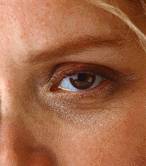
MONDAY, March 5 (HealthDay News) — For years, women with the severe form of premenstrual syndrome known as premenstrual dysphoric disorder (PMDD) were told that their symptoms should subside the day menstruation begins.
Now, new research suggests that these symptoms, which can include serious mood swings, start about four days before menstruation and can linger through the first three days of menses — as many women with the disorder can attest.
This expanded PMDD definition will help researchers update the Diagnostic and Statistical Manual of Mental Disorders (DSM-IV), due out in May 2013. The DSM classifies mental disorders by precise definitions and diagnostic criteria, and it influences treatment decisions and insurance reimbursement.
“It was thought that PMDD symptoms would drop off sharply at the onset of menses, and now we realize they don’t,” said study author Dr. S. Ann Hartlage, director of the Marital and Sex Therapy Program at Rush University Medical Center, in Chicago.
Hartlage and colleagues surveyed more than 1,000 women with and without PMDD about their symptoms for one or two menstrual cycles.
PMDD differs from premenstrual syndrome (PMS) in the number of symptoms it includes and their severity. Both conditions may be marked by bloating, short-term weight gain, breast tenderness and certain mood changes. However, extreme mood changes, anxiety, depression, anger and irritability may occur with PMDD to such an extent that they interfere with functioning at work or at home.
Experts said the new findings, published in the March issue of the Archives of General Psychiatry, will affect how women with PMDD will be labeled.
“This revision of how PMDD is defined will have an impact on research studies down the line,” said Dr. Christopher Estes, an assistant professor of obstetrics and gynecology at the University of Miami Miller School of Medicine. “It expands the amount of time around and during the menstrual cycle when the symptoms can be categorized as PMDD.”
Treatment depends on PMDD symptoms. “There is a role for antidepressants and hormonal treatments like oral contraceptives,” Estes said. According to Hartlage, these sometimes are prescribed at lower doses than would be used to treat depression or anxiety.
PMS, on the other hand, is typically treated with lifestyle changes, such as regular exercise, eating a healthy diet and caffeine avoidance as well as prescription or over-the-counter medication, including nonsteroidal anti-inflammatory drugs.
The American College of Obstetricians and Gynecologists says that women considered to have PMS suffer for at least three menstrual cycles with at least one symptom, such as depression, insomnia or food cravings, that emerges within five days before a woman’s period and ends within four days after the start of menstrual flow. These emotional and/or physical symptoms interfere with some aspect of daily life but to a lesser extent than PMDD.
The number of symptoms required for a PMDD diagnosis needs further exploration, the authors commented. The DSM-IV, the current edition, requires five symptoms, while the authors found that some women are impaired with three or four symptoms. These women would be excluded under the current definition.
Dr. Donnica Moore, an obstetrician-gynecologist and president of Sapphire Women’s Health Group in Far Hills, N.J., said the study raises awareness among psychiatrists about the full scope of PMDD.
“It has been very clear to women all along that PMDD symptoms persist after the first day of menstruation,” Moore said. “If you have any kind of menstrual symptoms that interfere with your activities of daily living, whether physical or emotional, discuss them with your doctor.”
More information
Learn more about PMS and PMDD at the U.S. National Institutes of Health.

